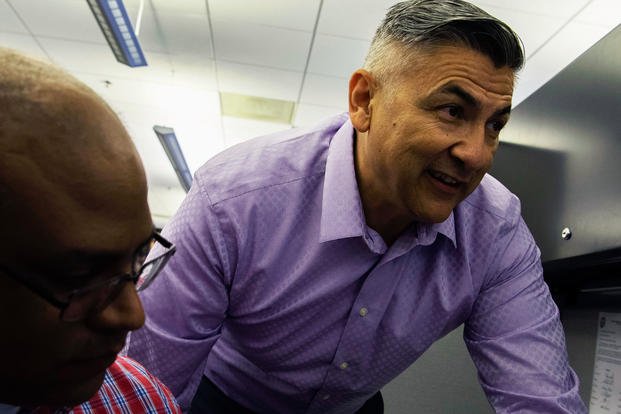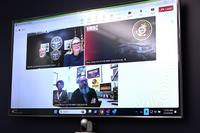Supporting service members as they transition back into civilian society and begin their second careers is a team effort. I believe there are three "players," each having a specific role: the Defense Department, the individual service member and employers in corporate America.
The DoD SkillBridge Transition Assistance Program enables active-duty service members to leave their units and work as civilian interns during their final months of service with no change to their compensation. Individual service members are required to seek out these opportunities, gain approval, manage their enrollment and participate.
Employers make this program work. They have an opportunity to play their part by partnering with service members who are approved for the DoD SkillBridge program through organizations such as HireMilitary. Their role is critical, as it provides transition assistance in the form of work experience and cultural immersion that, in most cases, results in civilian employment post-service. Secondary benefits include a more diverse workforce and reduced costs to the DoD and Department of Veterans Affairs.
But while more and more employers are enthusiastically seizing the opportunity to play their role on the veteran transition and employment team, it's important to know that preparation is required to ensure positive outcomes.
Related: Search for veteran jobs.
One way companies can help is by bringing in post-military interns to work, learn and grow their companies. But unlike other corporate newcomers or interns, veterans hail from an entirely different organizational culture. Imagine leaving everything that provides you with a sense of stability, security and identity; moving yourself and your family to a foreign country; and trying to find a job -- that's what it's like to be a military veteran in their first civilian job.
As you can imagine, implementing a military internship program requires individuals and organizations to learn, adapt and grow together.
This reality may leave direct supervisors, human resources leaders, co-workers and executives wondering, "How do we make this work for everyone?"
Leadership endorsement, workforce engagement, resource allocation and cross-cultural education are essential to the success of these programs. Here are some best practices and strategies for integrating a military intern into your workforce to support the team:
1. Introduce the company and leadership.
- Provide an understanding of organizational hierarchy and details around company culture, unwritten rules and common acronyms. Include the unpublished leadership style of the CEO or founder and the defined vision, mission and purpose. Employee stories and testimonies are preferred.
- Confirm the work schedule and personal accountability requirements, if there are any. It's important to know that, as a leadership function in the military, service members are required to communicate their whereabouts with their subordinates, so sharing arrival times and lunch breaks will come naturally. Be sure to discuss what are appropriate check-in or -out procedures in the workplace.
- Specify the federal holidays and days off that are recognized by the company. Be clear about federal holidays that are regular workdays, what "Personal Time Off (PTO)" is and how it's used.
2. Welcome and connect
- Introduce your new military intern through a companywide email, social-media post or newsletter. The introduction should include a not-in-uniform photo; a biography with their top one or two accomplishments from military service; and details about family, hometown, education and fun facts. This will help build relatability and connections between the intern and other employees.
- Invite veteran employees to act as mentors and support onboarding efforts.
- Anticipate and prepare for the internal disruption by educating the workforce on military culture. Solicit ideas to bridge the cultural gaps.
- Schedule lunch breaks with veteran and non-veteran employees every day for the first week.
- Recruit your intern for company sports teams and community giving/social impact events. They will jump at the chance to be active and/or serve others.
3. Include the family unit.
- Invite your military intern and their spouse or family members to company social events and team-building activities (as appropriate). Provide company swag for the family, if available.
- Military interns are learning how to work in a culture that values autonomy, initiative and self-promotion, yet they still function as a unit or team at home. Respect that partnership by recognizing the family.
4. Assign challenging and diversified work.
- Communicate the individual goals and objectives of the internship role. Treat it as a short-term project or statement of work. Be clear how decisions are made, who makes them, what the expected level of initiative is and where to find additional resources if needed.
- Provide challenging and diverse work experiences to ensure your intern has relevant situations and quantifiable data to reference during behavioral-based interviews.
- Assign opportunities to act as both a team leader and an individual contributor to help build confidence, credibility and earn trust with co-workers.
- Assign cross-functional tasks to help build an internal network and give exposure to a variety of roles to support peer connections, engagement, career and self-discovery.
- Assign a project that includes a final presentation of concepts, ideas and outcomes to an audience of hiring managers and executives to increase exposure and recognition.
5. Interact with awareness.
- Provide a few minutes' (minimum) advance notice when requesting project updates and status reports to allow time to prepare. Drive-by requests from a direct manager will cause undue stress.
- Provide weekly check-ins for coaching and progress reports. Some military interns may not ask for help, so be proactive and create opportunities to make it available.
- Service members will likely decline any offer for recognition, but recognize them anyway while being sensitive to their selfless and humble nature.
- Celebrate military service birthdays. Educate the workforce on the distinctions between the five military branches and the difference between Veterans Day (Nov. 11, observed to honor all veterans), Armed Forces Day (third Saturday of May), Memorial Day (last Monday of May observed to honor those who have died in service) and Military Spouse Appreciation Day (Friday before Mother's Day). Be extra respectful and sensitive on Memorial Day and Sept. 11.
6. Partner in the hiring process
- Communicate the interview and selection process early and often throughout the internship period, starting on the first day and weekly after that. Include the general timeline and identify key hiring managers, skills to master and strategic relationships to build.
- Explain how things often take longer than expected due to unforeseen circumstances, like the hiring manager taking an unplanned vacation. Explain potential delays or changes to the selection process, job requisitions, head count and any other variables that could delay or prevent a job offer.
- Share the company's internal mobility policy and how transfer requests are initiated. Knowing that upward and lateral opportunities exist will help reduce stress related to career decisions.
- Assist with internal interview preparations by revising resumes to match job requisitions and conducting mock interviews delivered one on one, by a panel and through video.
- Leverage industry associations and professional networks to support your intern's career search if post-internship employment is not secured.
Best practices are not just for military interns. In the end, this is really about taking the time to understand the human experience of being new in a new culture. It's also about valuing the differences between people regardless of newcomer status or group membership, and about the majority's role in creating an environment where individual differences are welcomed.
Finally, it's about enjoying the rewards of a thriving organization sustained by the diversity of its workforce.
Sara McNamara, MSOD, is a tireless advocate for veterans and all newcomers. She is the founder and principal consultant of SBM Transition Strategies, where she specializes in diversity, retention and talent management initiatives. She's a military spouse and scholar in the 2019 George Bush Presidential Stand-To Veteran Leadership Program, working to lead change and improve veteran outcomes nationwide.
Find the Right Veteran Job
Whether you want to polish your resume, find veteran job fairs in your area or connect with employers looking to hire veterans, Military.com can help. Sign up for a free Military.com membership to have job postings, guides and advice, and more delivered directly to your inbox.





